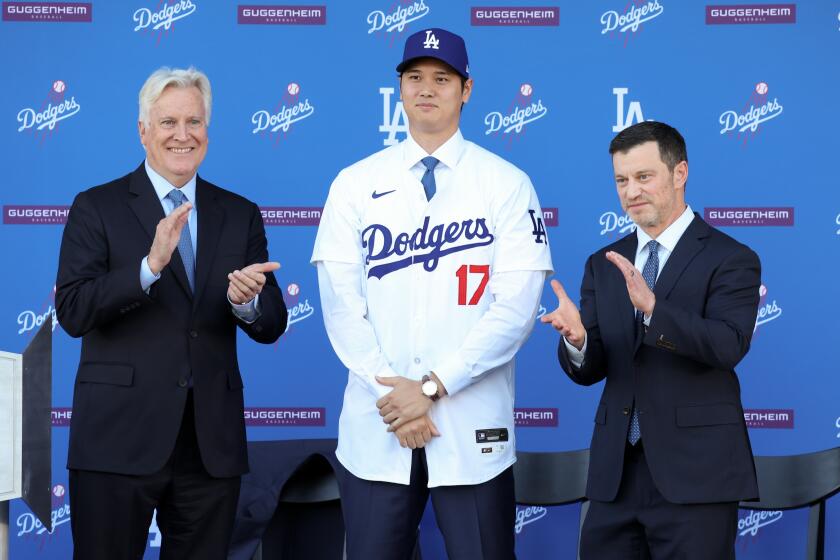RACING Q & A
- Share via
Question: “In races on the grass involving horses who have never raced on the turf, is there any information in the past performances that might be helpful in spotting horses who may run well in this new context?”
Answer: “The first inclination is to recommend a horse who, in his dirt races, has shown good speed,” says Hall of Fame horseman Allen Jerkens. “However it seems to me that a great many horses who come from behind fare nicely on the grass. There is a logical explanation. When these come-from-behind horses race on the turf, they do not get the dirt kicked back in their faces, as they do in races on the main track. In addition to come-from-behind horses, those who do well when the dirt tracks are firm will also do well on grass. The turf course will not cup or break away underfoot. It presents a surface of consistency. The times of the races will give you a clue as to the condition of the tracks and you can draw your own conclusions.”
Q: “When was the first claiming race run?”
A: The first claiming races appeared at American tracks shortly before the end of World War I. Prior to the development of claiming races, selling races were commonplace. The winner of such a race was sold at auction immediately after the race. The starting bid was the price of the race, and the owner of the winner was permitted to bid, too, to protect his horse. If the horse was eventually sold for a higher price than the starting price, the difference was divided between the owner of the second horse and the management of the track.
After selling races fell into disfavor, French claiming races were employed for a time. In a French claiming race, if a horse was entered for $5,000, and if there was a claim slip in the claim box for that horse, the horse was scratched and sold to the man who dropped in the claim slip.
Q: “Who was the first horse to bring $100,000 or more at public auction?”
A: His name was St. Blaise and he was sold at the dispersal of the August Belmont bloodstock holdings in New York in 1891. The purchaser was Charles Reed of Fairview Farm in Tennessee. St. Blaise, winner of the 1883 Epsom Derby, was imported to the United States by August Belmont in 1886 and led the American sire list in 1890. One of his best sons, Potomac, was 2-year-old champion that season. Unfortunately, St. Blaise had little success at stud in subsequent years, and when Reed’s bloodstock was dispersed, several years following his purchase of St. Blaise for the record price, St. Blaise was sold to James Ben Ali Haggin, the California horseman, for $5,550.
More to Read
Go beyond the scoreboard
Get the latest on L.A.'s teams in the daily Sports Report newsletter.
You may occasionally receive promotional content from the Los Angeles Times.










